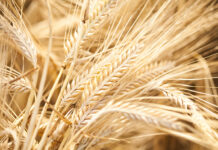EIMA International showcases not only innovative machinery but also crops ready to take off. This is the case of hybrid wheat which was the subject of an ad hoc meeting organized by Rv Venturoli and Saaten Union. The meeting had a clear message: with the new genetics available and cutting-edge machinery, the prospects for hybrid wheat are changing radically. Present on the market for several decades, it has never taken off due to excessively high costs and a certain inconsistency in yields. Even today, despite seeing progressive growth, the widespread use of hybrid wheat in the Italian landscape is still limited. According to an estimate by Vittorio Venturoli, head of the Bolognese seed company bearing his name, Italy has something in the order of 12-15 thousand hectares of hybrid wheat. To put this in perspective, in Europe hybrid wheat seeds occupy a small crop share of between 2 and 3%, which rises to around 5% in Italy and France.
New materials, improved agronomic techniques and the use of innovative machinery could double the amounts planted in the countries where it is most widely used. Moreover, as the geneticists of Saaten Union pointed out at EIMA International, a lot of work has been done on the yield front. In order to register a new hybrid there is a strict constraint: it must have an average yield 2.5% higher than that of the starting material. At EIMA, the seed company Rv Venturoli introduced farmers to efficient cultivation practices, from careful refinement of the soil with a low seeding depth (1.5-2) to early sowing with an ideal investment of 150 seeds/m2 (in the case of hard soil, a 25% increase in seeds per m2), up to the fractioning of the nitrogen supply (2-3 interventions). The problem of the higher cost of hybrid wheat seeds compared to traditional seeds can be contained by the fact that genetics also ensures higher yields on the seed production front, with a consequent decrease in the purchase price for farmers.
Some tests carried out this year, particularly difficult from a climatic point of view, were presented by Bruno Agazzani of the Negrini Foundation and compared traditional and hybrid wheat, with ploughing, minimum tillage and no-till sowing. The tests showed the hybrid wheat option on minimum tillage as the best possible combination in 2024. To ensure that genetics can express themselves at their best, cutting-edge mechanization becomes strategic, first and foremost in the seeding phase, which is particularly delicate for the crop. “In this scenario – states Sandro Battini of Kverneland Italia – we are now able to propose a revolutionary seed drill capable of working at 18 km/ha with a working width of up to 6 meters”.








